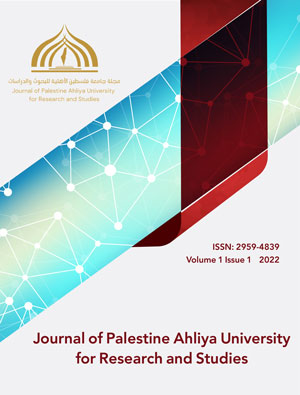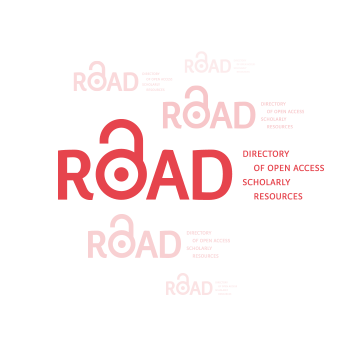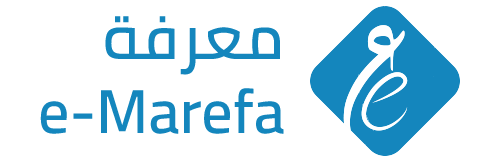Mechanics of Linguistic Mobility in COVID-19 Pandemic: Lexical innovation and richness
DOI:
https://doi.org/10.59994/pau.2022.1.144Keywords:
Language Change and Development, Corpus Linguistics, Critical Discourse Analysis, COVID-19 Pandemic, Corona LanguageAbstract
This small-scale study investigates ‘Mechanics of Linguistic Mobility in COVID-19 Pandemic: Lexical innovation and richness’. Thus, it generally studies the language native speakers of English have innovated and developed during the ongoing global crisis. In particular, it aims to quantify these terms, identify the morphological processes that facilitate the derivation of these phrases, and explain the reasons lying behind their selection and uses. Methodologically, the study fits into the qualitative research. For data collection, the study benefits from corpus linguistics, i.e. studies of large bodies of texts. Therefore, a concordance of key words in context (KWIC) has been carried out on the British National Corpora (BNC) and other lexicographic sites to build a corpus of corona language. Analytically, the study builds on critical discourse analysis (CDA) at the semantic, morphological and schematic, i.e. discourse level of words and phrases used during the crisis. It has been found that the terms and expressions used during the crisis are either coined to convey new senses or altered to satisfy certain meanings related to the pandemic. The morphological processes vary considerably between compounding, clipping, inflection and coining. The social domains in which the invented terms are used include family, education, health, psychology, sociology, business, politics, and religion.
Downloads
References
Abu-Akel, A., & Bailey, A. L. (2001). Indexical and symbolic referencing: what role do they play in children's success on theory of mind tasks?. Cognition, 80(3), 263-281.
Al-Balushi, B., & Essa, M. M. (2020). The impact of COVID-19 on children− parent’s perspective. International Journal of Nutrition, Pharmacology, Neurological Diseases, 10(3), 164-165.
Alison, L., Alison, E., Noone, G., Elntib, S., Waring, S., & Christiansen, P. (2014). Whatever you say, say nothing: Individual differences in counter interrogation tactics amongst a field sample of right wing, AQ inspired and paramilitary terrorists. Personality and individual differences, 68, 170-175.
BenSaïda, A., & Litimi, H. (2021). Financial contagion across G10 stock markets: A study during major crises. International Journal of Finance & Economics, 26(3), 4798-4821.
Borden, J., Zhang, X. A., & Hwang, J. (2020). Improving automated crisis detection via an improved understanding of crisis language: Linguistic categories in social media crises. Journal of Contingencies and Crisis Management, 28(3), 281-290.
Boberg, S., Quandt, T., Schatto-Eckrodt, T., & Frischlich, L. (2020). Pandemic populism: Facebook pages of alternative news media and the corona crisis--A computational content analysis. arXiv preprint arXiv:2004.02566. 1, 1-201
Breiseth, L. (2020). School responses to COVID-19: ELL/immigrant considerations. Colorín Colorado.
Cobb, S. D. (2007). A shadow underneath: The secret history of paranoia, borders and terrorism in postwar American literature and film. The University of Arizona, USA.
Deshpande, G., & Schuller, B. (2020). An overview on audio, signal, speech, & language processing for COVID-19. arXiv preprint arXiv:2005.08579.
Fromkin, V., Rodman, R., & Hyams, N. (2018). An Introduction to Language (w/MLA9E Updates). Cengage Learning.
Gleitman, L., & Papafragou, A. (2005). Language and thought. Cambridge University Press.
Gorbalenya, A. E., Baker, S. C., Baric, R. S., de Groot, R. J., Drosten, C., Gulyaeva, A. A., ... & Ziebuhr, J. (2020). Severe acute respiratory syndrome-related coronavirus: The species and its viruses–a statement of the Coronavirus Study Group. BioRxiv.
Hoff, E. (2013). Language development. Cengage Learning.
Hoff, E. (2006). How social contexts support and shape language development. Developmental review, 26(1), 55-88.
Holmes, J. (2013). An introduction to sociolinguistics. Routledge.
Holmes, J. (2013). An introduction to sociolinguistics. Routledge.
Jackman, H. (1998). Convention and language. Synthese, 117, 295-312.
Kimmelman, V. (2015). Information structure in Russian sign language and sign language of the Netherlands:(University of Amsterdam, 2014). Sign Language & Linguistics, 18(1), 142-150.
Kim, Y. G., Moon, H., Kim, S. Y., Lee, Y. H., Jeong, D. W., Kim, K., ... & Lee, S. H. (2019). Inevitable isolation and the change of stress markers in hemodialysis patients during the 2015 MERS-CoV outbreak in Korea. Scientific reports, 9(1), 1-10
Kitishat, A. R., Al Omar, K. H., & Al Momani, M. A. K. (2020). The Covid-19 crisis and distance learning: E-teaching of language between reality and challenges. Asian ESP Journal, 16(51), 316-326.
Malecki, K. M., Keating, J. A., & Safdar, N. (2021). Crisis communication and public perception of COVID-19 risk in the era of social media. Clinical Infectious Diseases, 72(4), 697-702.
Marques, A. C. (2019). Displaying gender: transgender People's strategies in everyday life. Symbolic Interaction, 42(2), 202-228.
Murphy, M. P. (2020). COVID-19 and emergency eLearning: Consequences of the securitization of higher education for post-pandemic pedagogy. Contemporary Security Policy, 41(3), 492-505.
Oyebode, O., Ndulue, C., Mulchandani, D., Suruliraj, B., Adib, A., Orji, F. A., ... & Orji, R. (2022). COVID-19 pandemic: Identifying key issues using social media and natural language processing. Journal of Healthcare Informatics Research, 6(2), 174-207.
Pennebaker, J. W., & Lay, T. C. (2002). Language use and personality during crises: Analyses of Mayor Rudolph Giuliani's press conferences. Journal of Research in Personality, 36(3), 271-282.
Rashed, S. K., Ahmed, R., Frid, J., & Aits, S. (2020). English dictionaries, gold and silver standard corpora for biomedical natural language processing related to SARS-CoV-2 and COVID-19. arXiv preprint arXiv:2003.09865.
Schmitt, N. (Ed.). (2013). An introduction to applied linguistics. Routledge.
Schuller, B. W., Schuller, D. M., Qian, K., Liu, J., Zheng, H., & Li, X. (2021). Covid-19 and computer audition: An overview on what speech & sound analysis could contribute in the sars-cov-2 corona crisis. Frontiers in digital health, 3, 564906.
Singh, J., & Singh, J. (2020). COVID-19 and its impact on society. Electronic Research Journal of Social Sciences and Humanities, 2(1), 168-172.
Thorne, T. (2020). CORONASPEAK–the language of Covid-19 goes viral. Language and innovation, 93-105.
Wang, Z. (2021). Addressing migrants’ well-being during COVID-19: An analysis of Chinese communities’ heritage language schools in Germany. Migration Studies, 9(3), 1144-1165.
Wargadinata, W., Maimunah, I., Febriani, S. R., & Humaira, L. (2020). Mediated Arabic language learning for higher education in COVID-19 situation. Izdihar: Journal of Arabic Language Teaching, Linguistics, and Literature, 3(1), 59-78.
Wolfer, S., Koplenig, A., Michaelis, F., & Müller-Spitzer, C. (2020). Tracking, exploring and analyzing recent developments in German-language online press in the face of the coronavirus crisis: cOWIDplus Analysis and cOWIDplus Viewer. arXiv preprint arXiv:2005.13316.
Zou, C., Zhao, W., & Siau, K. (2020). COVID-19 pandemic: A usability study on platforms to support eLearning. In HCI International 2020–Late Breaking Posters: 22nd International Conference, HCII 2020, Copenhagen, Denmark, July 19–24, 2020, Proceedings, Part II 22 (pp. 333-340). Springer International Publishing.

Downloads
Published
How to Cite
Issue
Section
License
Copyright (c) 2023 Journal of Palestine Ahliya University for Research and Studies

This work is licensed under a Creative Commons Attribution 4.0 International License.
مجلة جامعة فلسطين الاهلية للبحوث والدراسات تعتمد رخصة نَسب المُصنَّف 4.0 دولي (CC BY 4.0)











